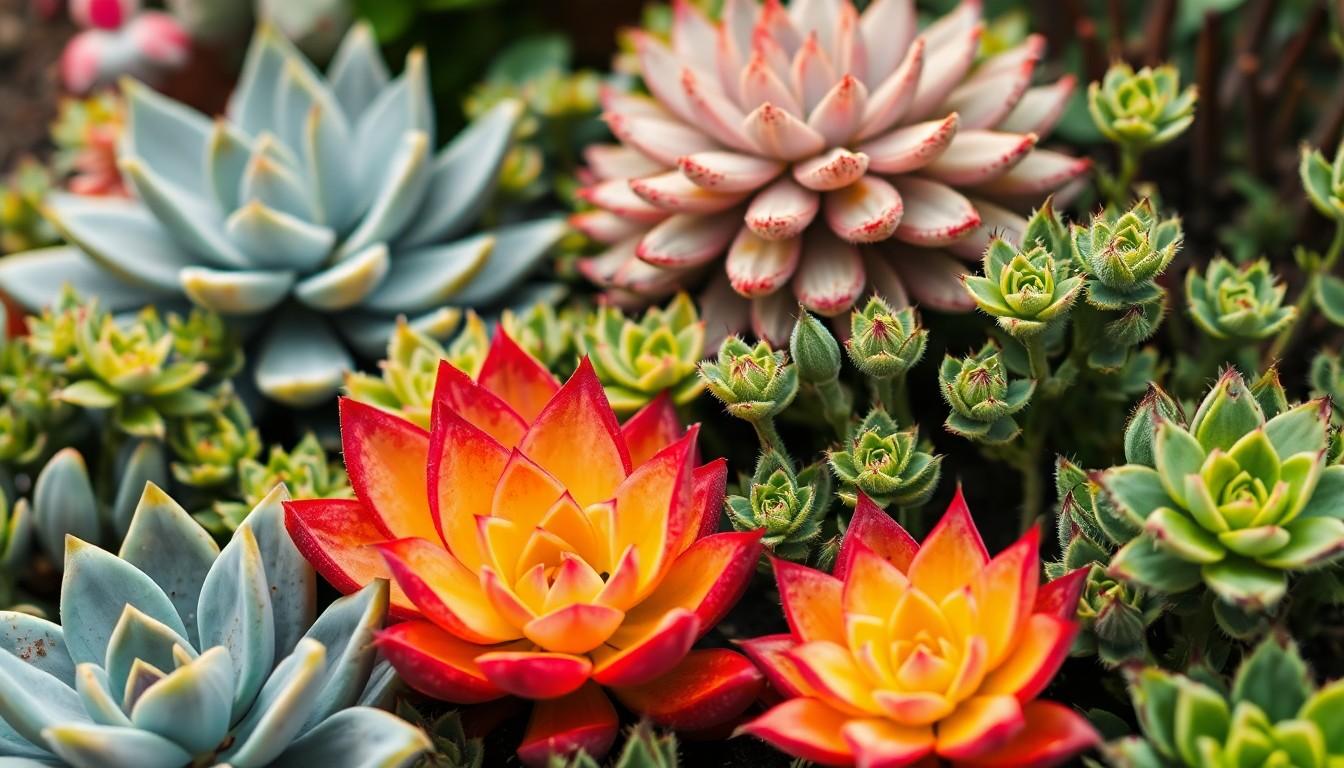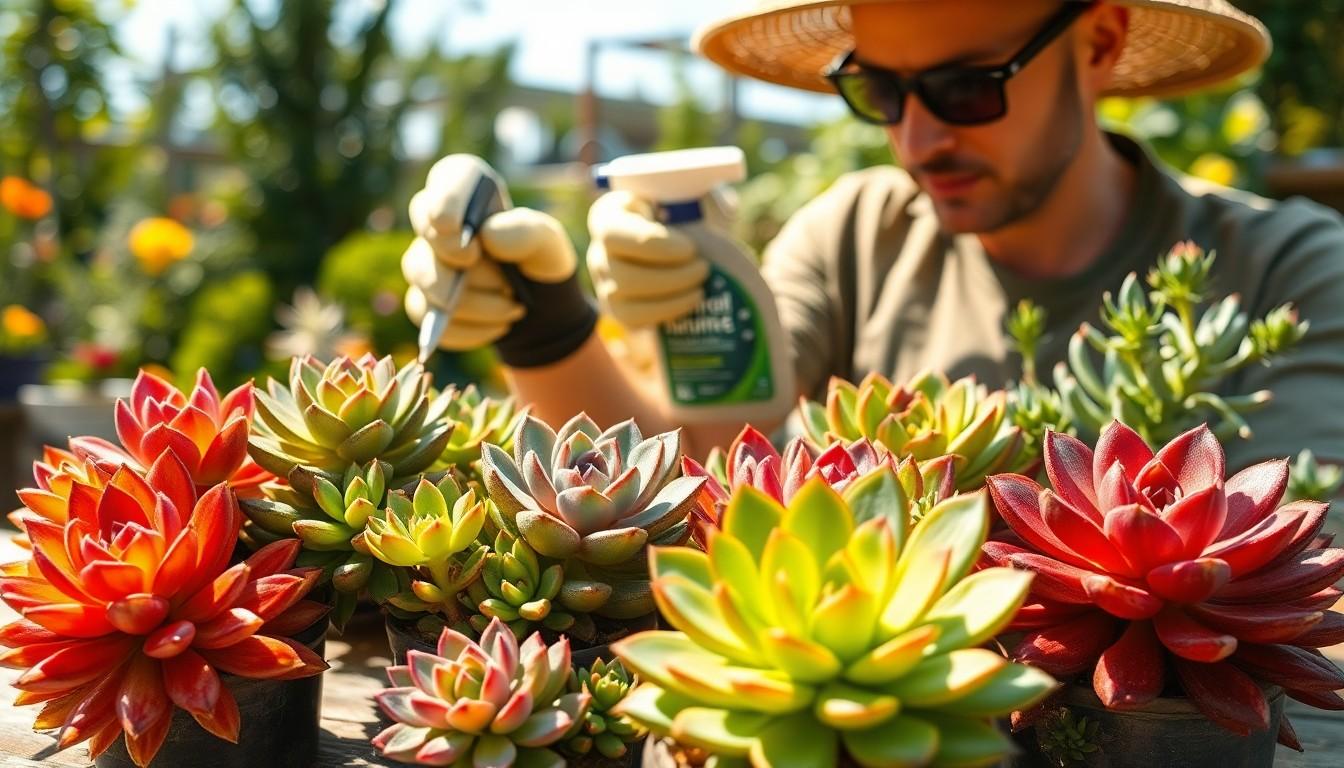Succulents are the trendy darlings of the plant world, known for their plump leaves and low-maintenance charm. But even these resilient beauties can fall victim to pesky fungal infections that threaten their vibrant allure. Enter fungicides—your succulent’s new best friend. Think of it as a superhero cape for your plants, swooping in to save the day and keep those leaves looking fabulous.
Overview of Fungicide for Succulents
Fungicidal treatments target various fungal threats to succulents, such as root rot and powdery mildew. These infections often stem from overwatering or poor air circulation. Using fungicides helps maintain the overall health of the plants, ensuring that they thrive in their environment.
Available fungicides come in various forms, including sprays, granules, and systemic treatments. Each type is designed to treat specific fungal issues effectively. Organic fungicides, derived from natural ingredients, present an eco-friendly option that minimizes chemical exposure, making them suitable for indoor plants.
Applying fungicides correctly is crucial for effectiveness. Timing plays a significant role; early intervention during the onset of symptoms often yields the best results. Application instructions vary between products, but generally, thorough coverage of affected areas is necessary.
Shopping for fungicides requires awareness of ingredients. Common active components include copper sulfate and potassium bicarbonate. These ingredients effectively combat fungal spores while being safe for the plants when used as directed.
A balanced routine fosters healthier succulents, decreasing the likelihood of fungal problems. Regular monitoring helps identify early signs of distress, and implementing preventive measures can minimize the need for treatment. Gardeners should consider factors such as watering habits and light conditions to maintain plant vigor.
Fungicides serve as a valuable asset in succulent care. Understanding their use empowers growers to protect their plants from fungal threats, preserving the visual appeal and vitality of their collection.
Types of Fungicides

Fungicides for succulents come in various forms, catering to different needs and preferences. Understanding these types can help ensure effective treatment against fungal threats.
Chemical Fungicides
Chemical fungicides are synthetic solutions specifically designed to combat a range of fungal infections. These products often contain active ingredients like azole or strobilurin, which work by disrupting fungal cell division and growth. Quick absorption allows for rapid action against stubborn issues such as root rot and powdery mildew. Additionally, chemical fungicides may provide residual protection, continuing to safeguard plants after application. However, careful adherence to instructions maximizes safety and efficacy.
Organic Fungicides
Organic fungicides offer an eco-friendly alternative without harmful chemicals. These typically contain natural ingredients such as neem oil or sulfur, promoting plant health without risking environmental impact. Organic options target fungal spores effectively while being safe for indoor use. Application frequency often depends on the severity of the issue, making it essential to monitor plant health closely. Many growers appreciate organic fungicides for their gentler approach, allowing for healthier succulents in both appearance and sustainability.
Benefits of Using Fungicide for Succulents
Utilizing fungicides offers numerous advantages for succulent care. Protecting these plants from fungal infections encourages healthy growth. Controlling root rot significantly reduces issues caused by overwatering, a common problem in succulent care.
Targeting specific pathogens aids in maintaining optimal plant health. Improper air circulation often leads to powdery mildew; fungicides efficiently combat these threats. Applying fungicides enhances the overall resilience of succulents against infections.
Organic fungicides promote safety for both plants and the environment. Using natural ingredients allows gardeners to maintain an eco-friendly approach while keeping plants protected. Chemical fungicides provide quick action when necessary, effectively addressing stubborn fungal problems.
Ensuring proper application maximizes effectiveness, as thorough coverage increases the chances of success. Monitoring plants regularly allows for early detection of any potential fungal threats. Regular fungicide applications prevent infestations, allowing for long-term protection.
Boosting the aesthetic appeal of succulents contributes to overall plant health, encouraging lush and vibrant growth. Cultivators can confidently display their plants, knowing they are safeguarded against common fungal threats. Using fungicides not only protects but also enhances the beauty and longevity of succulents, making them a valuable asset in any plant care routine.
How to Apply Fungicide on Succulents
Applying fungicide properly ensures the health of succulents. Techniques vary based on the product used and specific plant needs.
Application Methods
Sprays represent a common method for application, allowing even coverage on leaves and soil. Granules work effectively when applied directly to the soil, targeting root systems. Soaking the soil with liquid fungicides promotes deep absorption, enhancing root protection. Always follow the manufacturer’s instructions for dilution ratios and application techniques. A paintbrush can also assist in applying fungicide to hard-to-reach areas, ensuring thorough coverage. Using protective gear, like gloves and masks, reduces exposure to chemicals during application.
Timing and Frequency
Applying fungicide during the early morning promotes better absorption and minimizes leaf burn. Fungicide should be applied at the first sign of fungal issues, preventing further spread of infection. A regular schedule, such as every two weeks, enhances preventive measures against fungi. Seasonal changes may require adjustments in timing, especially during high humidity or excessive rainfall. Observing plants regularly helps determine if additional applications are necessary. Always allow sufficient time between applications to avoid chemical buildup in the soil.
Potential Risks and Considerations
Understanding risks with fungicide use is crucial for succulent care. Chemicals present potential side effects that can harm plants. Overapplication leads to toxicity, damaging roots and leaves. Safe usage requires following label instructions carefully.
Organic fungicides, while safer, also carry certain risks. Some natural ingredients can cause allergic reactions in sensitive plants. It’s essential to test any new product on a small area before full application. Monitoring succulents after treatment helps identify any adverse reactions quickly.
Environmental considerations play a significant role in fungicide use. Runoff from overwatered soil can pollute nearby water sources. Using fungicides responsibly minimizes ecological impact, promoting sustainable gardening practices. Timing applications during dry conditions prevents unnecessary environmental exposure.
Plant health is another factor to consider. Stress from fungal infections can weaken plants, but overusing fungicides can add to that stress. Adopting an integrated pest management strategy balances using fungicides with proper watering and good ventilation.
While benefits of using fungicides beat risks, caution remains vital. Understanding each fungicide’s active ingredients helps make informed choices. Plant owners should consider their specific conditions and environment when selecting a product. Regularly checking for fungal signs assists in timely treatment, reducing reliance on fungicides.
Conclusion
Fungicides play a vital role in maintaining the health and beauty of succulents. By effectively combating fungal infections, they ensure these resilient plants thrive in various conditions. Whether opting for chemical or organic options, understanding the specific needs of succulents helps in making informed choices.
Regular monitoring and proper application techniques are key to preventing infestations. With the right approach, gardeners can enjoy vibrant and lush succulents that remain free from fungal threats. Embracing fungicides as part of a holistic care routine not only enhances plant vitality but also contributes to a thriving indoor or outdoor garden.

